Clancy Tucker's Blog, page 148
July 1, 2018
2 July 2018 - JOHN CARROLL - VICTORIA CROSS WINNER
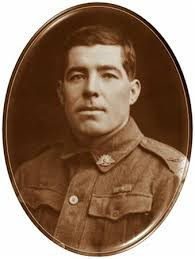
JOHN CARROLL - VICTORIA CROSS WINNER -
G'day folks,
John Carroll, VC was an Australian recipient of the Victoria Cross, the highest award for gallantry in the face of the enemy awarded to British and Commonwealth forces.
John Carroll (1891-1971), soldier, labourer and railway employee, was born on 16 August 1891 in Brisbane, son of John Carroll, labourer, and his wife Catherine, née Wallace, both Irish-born. When he was 2 the family moved to Donnybrook, Western Australia, and then to Yarloop. About 1905 they settled at Kurrawang where John and his father joined the Goldfields Firewood Supply Co. as labourers. Tall and well built, John was a good athlete and a prominent member of the local football club; he was working as a railway guard on the Kurrawang line when he enlisted in the Australian Imperial Force as a private on 27 April 1916.
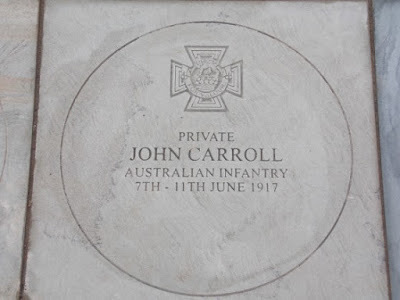
Carroll embarked for England in August with reinforcements for the 44th Battalion, then on 14 November was transferred to the 33rd Battalion. He went into the line at Armentières, France, and served there until April 1917 when his unit moved into position for the Messines offensive. On 7 June, in the battle of Messines Ridge, he rushed an enemy trench and bayoneted four men, then rescued a comrade who was in difficulties.
Later in the advance he attacked a machine-gun crew, killing three men and capturing the gun, and, in spite of heavy shelling and machine-gun fire, dug out two of his mates who had been buried by a shell explosion. During the battle his battalion was in the line for ninety-six hours and Carroll 'displayed most wonderful courage and fearlessness' throughout.
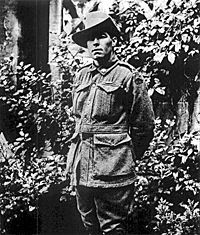
He was awarded the Victoria Cross and in September was promoted lance corporal. On 12 October, in the second battle of Passchendaele, he was severely wounded and did not rejoin his unit until June 1918; next month he was transferred to A.I.F. headquarters, London, and in August returned to Australia.
After demobilization Carroll resumed work as a guard on the Kurrawang line. He married Mary Brown in the Catholic Cathedral, Perth, on 23 April 1923; they had no children. In the mid-1920s he moved to the Yarloop district and in November 1927, when he was working as a railway truck examiner at Hoffman's Mill, he slipped while boarding a train during shunting operations and crushed his right foot; it was amputated but he continued working for many years as a labourer and railway employee. In 1956 he went to London for the Victoria Cross centenary celebrations, then retired to the Perth suburb of Bedford. He died in the Repatriation General Hospital, Hollywood, on 4 October 1971 and was buried in Karrakatta cemetery with full military honours. His wife had predeceased him.
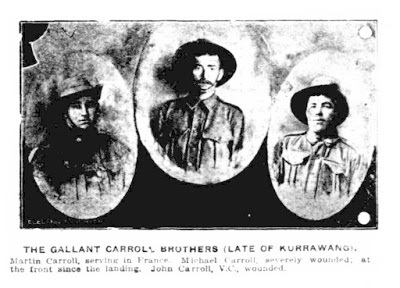
Carroll, who was known among his A.I.F. comrades as 'the wild Irishman', was casual and happy-go-lucky by nature. He missed three dates for his investiture with the V.C. and had to be sent for on the fourth occasion; after the ceremony he amused himself by exercising the Victoria Cross winners' right to turn out the Buckingham Palace Guard. He was also known as 'Referendum Carroll' because he rarely said anything but yes or no. Two of his brothers served as privates in the A.I.F.
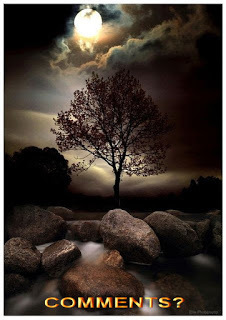
Clancy's comment: Man, such courage under fire. They should have made him our Prime Minister, or at least the captain of our cricket team.
I'm ...


Published on July 01, 2018 13:57
June 30, 2018
1 July 2018 - JACKIE ROBINSON COURT MARTIALED FOR SITTING NEXT TO A BLACK WOMAN
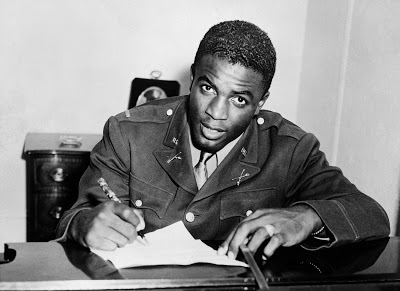
JACKIE ROBINSON COURT MARTIALED FOR SITTING NEXT TO A BLACK WOMAN
G'day folks, Jack Roosevelt Robinson was an American professional baseball second baseman who became the first African American to play in Major League Baseball in the modern era, but Jackie Robinson had a Rosa Parks moment of his own long before he broke the race barrier in baseball
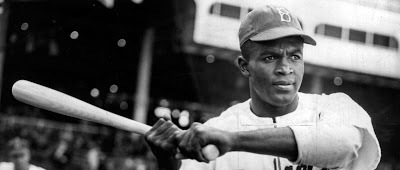
Three years before he became the first black man to play in major league baseball, and more than a decade before Rosa Parks refused to give up her bus seat, Jackie Robinson had a Rosa Parks moment of his own. Lieutenant Robinson, as he was known in 1944, was serving in the U.S. Army at one of the worst posts for black men — Camp Hood. Located outside of Waco, Texas, the area’s residents were infamously hostile to servicemen of colour.
On the evening of July 6, Lieutenant Robinson boarded a Southwestern Bus Company bus and took a seat next to a fellow officer’s fair-skinned wife, who was in fact African American. The driver believed the woman was white and, this being 1944, told Robinson to get to the back. Robinson, whose military career had been exemplary up that point, refused to move and told the driver to focus on his driving instead.
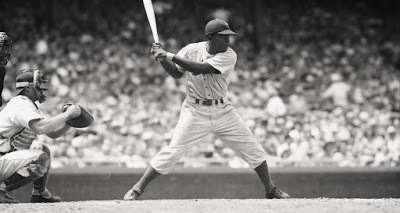
His response didn’t go over well. The men argued all the way to Robinson’s stop, where the bus dispatcher got involved, calling Robinson… well, you can probably guess what he called him. An angry crowd of racist civilians and military police officers formed around the bus.
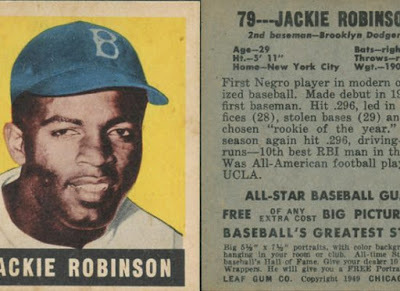
A woman threatened to press charges against the future number 42. The prevalence of lynching in Texas must have been on his mind, but Robinson showed no signs of fear. One of the military policemen urged him to head to the police station with him, so they could sort the matter out in a relatively saner setting. Robinson agreed, but when they got there, another white officer ran up to the car and asked if they had “the nigger lieutenant.” Robinson told the men that he would “break in two” the next person to use that word.
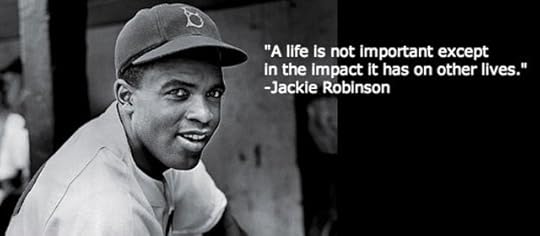
Thirteen depositions were taken alleging that Robinson had behaved badly and he was court-martialed over the matter. Fearing that he wouldn’t get a fair trial, he wroteto the secretary of war’s civilian aide, asking for advice. “I don’t want any unfavorable publicity for myself or the army,” he wrote, “but I believe in fair play.” By some stroke of luck, Robinson was acquitted of all charges.
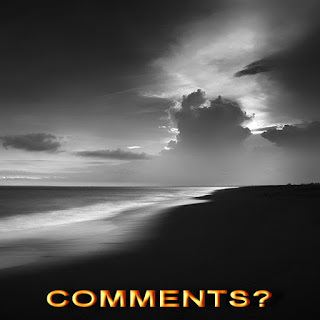
Clancy's comment: Go, Jackie! Love ya work! I admire those who stand up for the issues they shouldn't have to stand up for, but by so doing, they change the world for the better.
I'm ...


Published on June 30, 2018 15:27
June 29, 2018
30 June 2018 - SANDY KEGEL - GUEST AUTHOR
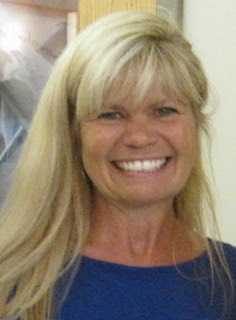
SANDY KEGEL - GUEST AUTHOR -
G'day folks,
Today, I interview an inspiring author from Wisconsin.
Welcome, Sandy ...
1. TELL US A LITTLE ABOUT YOURSELF AND YOUR WRITING JOURNEY.
I am a mother of 5 grown children and 1 stepson. But way before motherhood, I loved to write. This journey started when I was in elementary school. After high school, my writing was delayed for a few decades as I raised and schooled my children, (and a whole lot of life happened.) Then about 6 years ago, my children all suggested I begin to write my adventures and life experiences down. Then a close group of women friends said the same thing over a week long retreat in the Northwoods of Wisconsin. I signed up for a Creative Writing for Publication class, and here I am today….continuing the journey.
2. WHEN AND HOW DID YOU BECOME A WRITER?
As I’ve said, I have enjoyed writing and drawing since I was a little girl. I took writing classes in school, I journaled daily and kept journals of my adventures. I also wrote long letters to friends and family whenever I had interesting tales to tell. I had letters to the editor of several local papers published, along with an article about my dad after he passed, accompanied with the Journal artist rendition of my story. I helped my (ex) husband write political material for his campaigns and because he was an offset print shop owner, I sometimes helped to create text for his customers. My brother is also a print shop owner and occasionally I’ve edited or copywriter text for his customers.
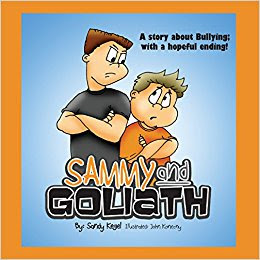
3. WHAT TYPE OF PREPARATION DO YOU DO FOR A MANUSCRIPT? DO YOU PLAN EVERYTHING FIRST OR JUST SHOOT FROM THE HIP?
For my memoir (currently writing), I had a sort of outline of main life events to write about in a timeline kind-of-way. Then I just mostly began writing from memory and from my journals. But I have some backlash memories within the story. For my children’s book I just sat down and wrote the first draft. Then modified it and presented it first to my writing class, then the publisher.
4. WHAT DO YOU ENJOY MOST ABOUT BEING A WRITER? When I read Sammy and Goliath—my book about bullying—to school children, I love the interaction they have with my characters. I love that the book has a purpose and we have real life dialogue and brain-storming solutions for their own experiences. And of course I love that people want to buy it! As I share my excerpts from my memoir with my writing class and get positive feedback, that is a reward, as is growing as a writer. It is a boost of confidence when I think what I just read sucks, but the consensus is overwhelmingly positive from the group. It keeps me going. I mostly love that the books I hope to write will leave an impact and bring some positive change, aside from being engaging and entertaining. I also love to learn and improve, gain new words, to refine and write more richly than I have the year before.
5. WHAT IS THE HARDEST THING ABOUT BEING A WRITER?
Hearing the work of really talented writers, and becoming discouraged that mine is not good enough—that I have a long way to go to be THAT good. And also sitting here at my computer every day to continue on, to forge ahead in the midst of a zillion distractions. Then there is the marketing aspect of book selling….
6. WHAT WERE YOU IN A PAST LIFE, BEFORE YOU BECAME A WRITER?
Before calling myself a writer, I was a mother, a school teacher, a campaign manager, an artist, a traveler, a mountain hiker, storm surviver, river boat sailer, bicyclist, volunteer, Bible teacher, narcissist surviver, avid gardener and played a few other roles, most of which I didn’t get paid for in cash. But those experiences did yield a harvest of character building and honing my soul into something better than I was.
7. WHAT IS YOUR GREATEST WRITING ACHIEVEMENT?
I think it will be my memoir when I finish it! I’m on a slow track while I live life to the fullest, however, I want to complete all drafts this year.
8. WHAT ARE YOU WORKING ON AT THE MOMENT?
My memoir and another children’s book. I also interview people at my church ( a very large church in Wisconsin), who have interesting, life-changing stories. This is a new thing and I enjoy it very much. I write down the story after several hours of interaction and questions, and some of these stories are then made into videos for a larger audience.
9. WHAT INSPIRES YOU?
The story itself inspires me to write. I think this book will entertain (my harrowing experiences while adventuring), but also help other women and men who have experienced emotional and psychological abuse from an intimate mate/spouse, and found strength spiritually, to move on and find the victory. My writing friends and classmates also inspire me to continue writing. Outside of writing, bringing hope and worth to people in various settings is inspirational. The reward of seeing smiles on people’s faces. I just love engaging with people from all walks of life.
10. WHAT GENRE DO YOU WRITE?
Besides my memoir, I don’t have a specific genre. I think I’d like to get into fantasy children’s stories, I have some non-fiction spiritual works I’d like to write, teaching materials, and maybe dabble into fictional novels. I don’t want to limit myself once I get this memoir completed!!
11. DO YOU HAVE ANY TIPS FOR NEW WRITERS?
I am a new writer! But I’d suggest joining a writing group. My grammar and writing skills have improved tremendously since taking this on-going class. We give constructive criticisms, learn from one another, improve skills and have a lot of fun. Plus, it is very encouraging to hear positive feedback from the group.
12. DO YOU SUFFER FROM WRITER’S BLOCK?
Yes! Even when writing my own story, it is often hard to fine the next starting point. Then I have to just begin, edit, cut and paste a lot!
13. DO YOU HAVE A PREFERRED WRITING SCHEDULE?
I have certain days that I TRY to set aside to write. I have a fluid schedule between jobs, so whenever the morning or afternoon opens up, I try to utilize those hours for writing.This is another reason a writing group is fantastic…if you have to have a piece to read, then you are forced to write.
14. DO YOU HAVE A FAVORITE WRITING PLACE?
My artroom/office is where I do most of my writing. However, I have a strong pull to stop typing and go create an art piece instead, so it is a bit dangerous. I have two sunny windows, so this works fine. Until summer weather calls me outdoors…so many distractions. I finally bought another (working) laptop so I’m not confined to my room anymore.
15. WHAT IS YOUR GREATEST JOY IN WRITING? Besides what I’ve stated before, a great joy is writing something very profound. When I use compelling words or analogies that hit the mark in a smart way. Then I feel I’ve accomplished something, and it is satisfying.
16. WHO IS YOUR FAVOURITE AUTHOR AND WHY?
I can’t say I have a favorite. I like a book that absorbs me, whether its fiction or non-fiction. I’ve been reading some of Erik Larson’s books. I like his books because he tells a great story while highlighting a little piece of history. (I hope my memoir will be something like this…a moving, living story), I like memoirs that show survival and overcoming tremendous circumstances, and survival stories in general. I recently finished Frank McCourt’s memoir, Angela’s Ashes.
17. WHAT’S THE GREATEST COMPLIMENT YOU EVER RECEIVED FROM A READER?
From Sammy and Goliath, one comment I loved was, “William loved your book. We read it over and over.” And the nice reviews I received on Amazon. With my memoir, it was a comment from a classmate who said, “This is so captivating! It reads like a movie!”
18. WHAT WAS THE WORST COMMENT FROM A READER?
Hmmm, I have not had any negative comments to my face about Sammy and Goliath, and I’ve had many comments from my writer’s group suggesting changes, or received the big question mark and the word, “clarify!” next to a paragraph. Some comments are biting, because writing expresses who we are and it is a very vulnerable thing to reveal yourself through writing. But I usually take the remark and make the necessary change.
19. WRITERS ARE SOMETIMES INFLUENCED BY THINGS THAT HAPPEN IN THEIR OWN LIVES. ARE YOU?
Hahaha, if anyone is following this dialogue, then you know I’m writing my memoir. My life has indeed influenced who I am today. And I believe it is interesting enough to write down and share because I’m sure plenty of people will relate.
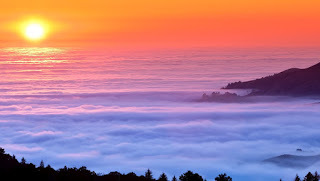
20. OTHER THAN WRITING, WHAT ELSE DO YOU LOVE?
Foremostly, (I know that’s not a real word, but sometimes you have to make one up when it makes sense in the moment)…foremostly, I love God. Through the whirlwind of life, and dark seasons, I have come to know Him as personal and good, even when He was greatly misrepresented to me in a warped way. And many times I didn’t understand His ways. But I’ve learned to trust over the long-haul. I love my husband, who has supported me and given me back an identity that I lost in my first marriage. He believes in me. I love my children. And people in general. I love Outside. Gardening, kayaking, hiking, strolling, swimming, sitting in the breeze looking at a lake, reading, taking warm baths, a good glass of wine, good conversations, helping people….I love a lot. I also have a passion to serve, I volunteer in a number of organizations that help people—homeless and marginalized people (find their dignity and worth), mentoring students, inner city ministries….very rewarding. I’m the more blessed by it.
21. DID YOU HAVE YOUR BOOK / BOOKS PROFESSIONALLY EDITED BEFORE PUBLICATION?
Not my children’s book. It was semi-professionally edited by my classmates. And they’re pretty good. I think I will with my memoir.
22. DESCRIBE YOUR PERFECT DAY.
My best day would be one in which I sleep in until about 8a.m., my husband brings me a cup of coffee with frothy milk on top, I sit outside on my patio in my pj’s listening to the birds for an hour or so. I plant something colorful before it gets too hot in the day, then take a scenic paddle in my kayak down a slow moving river with whoever else is up for it. We stop for a picnic. Maybe a swim if the river has a nice sandy bottom and is clear. Later on I read a good book in the shade somewhere, and my husband and I find a rooftop restaurant to have a beer or a refreshing Margarita. (This is a summer scene of course. I could live perpetually in summer)
23. IF YOU WERE STUCK ON A DESERT ISLAND WITH ONE PERSON, WHO WOULD IT BE? WHY?
I might need Mark Watney (Martian character) to use his scientific skills to grow some food in the desert sand. Or Matt Damon, the actor who played his character would be a good substitute! —In truth, my husband, John, of course. He is my best friend, I trust him, he has boy scout skills :) He is my cheerleader and confidant. We would do the hard thing of survival together, and have fun doing it.
24. WHAT WOULD YOU SAY IF YOU HAD THE CHANCE TO SPEAK TO WORLD LEADERS?
In lieu of Billy Graham’s recent passing, I’d say, listen to what he had to say. He was the twentieth century’s most influential world leader and global spiritual front-runner. His words were powerful—calling on politicians to lead with integrity and to work together in global crises, but they were also eternal. There is a Being who brought about the Universe and holds it all together. It would be wise to seek Him for direction in the grandiose as well as the detail of human purpose and survival.
25. WHAT ARE YOUR PLANS FOR THE FUTURE?
After I publish my book, I hope it will become a springboard to speak at some events (church conferences and other events) about aiding rather than shaming women who are in emotionally abusive relationships, and talk about the adventure parts of my story as well. I also want to write more children’s stories, and Christian-based books as tools for overcoming hardships. I want to continue to adventure and do more meaningful trips with the purpose of helping people (mission trips, organizations that help immigrants, street kids, wounded women etc.) I want to laugh a lot, keep playing outside, watch my children develop their lives and hope to experience grand-parenting.
26. WHAT ARE YOUR VIEWS ON BOOK TRAILERS? DO THEY SELL BOOKS?
I haven’t really watched book trailers, so I guess that speaks for itself. I like book recommendations more than anything. But if someone has has had success in book trailers then I suppose they sell books. I don’t think I’d invest in marketing my book that way unless I knew and trusted an author who has found it to be a great marketing tool.
27. DO YOU SEE YOURSELF IN ANY OF YOUR CHARACTERS?
Yep. I’m the main character. Once my memoir is completed, I hope to write some fiction, and would create other versions of myself in the story to one degree or another. It is experience after all, that brings to my mind stories that others could relate to, or want to relate to. Or pretend to relate to!
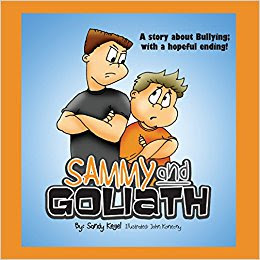
28. DOES THE PUBLISHING INDUSTRY FRUSTRATE YOU?
Yes. I wish it was simpler, and less time-consuming to market a book and get it seen. I also wish it was less expensive when going the self-publishing, or Indie printing route. I think there are many good Indie publishers, but they are costly and I haven’t found one that does much in the way of trying to help authors promote (without running up an astronomical marketing bill). Trying to go traditional is tough for new writers, because one has to be proven first, an oxymoron. I’d like to experience traditional publishers that see the value of investing in new authors, and giving us the time of day.
29. DID YOU EVER THINK OF QUITTING?
I haven’t thought of quitting because I have too much invested at this point. I do get discouraged a lot.
30. WHAT WAS YOUR FAVOURITE MANUSCRIPT TO WRITE?
Why? I’d have to say this memoir, since it is the real first manuscript I’m writing. My children’s story was not a long endeavor. My memoir poses challenges (length, research, quotes) and I’ve been working on it a number of years. It will be highly rewarding to see the completed work. I think it will not only be entertaining, but informative and give other readers hope and direction who might find themselves in similar relationships. And perhaps spark good memories for the sailing, biking, hiking exploits in the book.
31. HOW WOULD YOU DEFINE ‘SUCCESS’ AS A WRITER?
I’d say you are successful as a writer when your work improves and you can easily draw your reader into your story—when the emotions, the people and places are viewed from the reader’s eye because the story is vividly penned. And of course selling the story is a fine example of success too! Sometimes success is merely writing a good word. Then a sentence. Followed by a paragraph, and then pages. And voila—the book emerges.
32. WHAT SHOULD READERS WALK AWAY FROM YOUR BOOKS KNOWING? HOW SHOULD THEY FEEL? My books will be successful if the reader walks away believing they have gained something by reading them. In Sammy and Goliath, I want students to have tools to fight bullying and feel confident in public places. I want them to have learned the lessons outlined by my characters, and learn to be kind-hearted to everyone. In my memoir, I hope readers will feel the tension in my harrowing adventures, the very spray of the water, the heat on my back, and flies in my face—to feel my emotions, my frustrations, my doubts, and root me on to the end. I want them to gain a sense of triumph with me. I hope to portray some Spiritual truths that will dispel false representations of the Christian faith, and aid others in their quest for worth and truth.
33. WOULD YOU LIKE TO HAVE YOUR BOOKS MADE INTO MOVIES? EVER WRITTEN A SCREENPLAY?
I’d love to see my memoir made into a movie! It has the external elements of harsh environments on a timid, novice adventurer, (battling hurricane winds on a sailboat in the North Sea, flooded waters of the Mississippi, and a strenuous cycling trip loaded down with gear). It also reveals the internal struggles brought on by an oppressive marital relationship, my efforts to comprehend spiritual (perceived) mandates, my failures, my internal conflicts with who I should be and who I wanted to be, and the intertwined love/hate story. To summarize, it is a true life story that consists of exciting adventure, a love story, twisted complications and much tension. There are endings and beginnings, with personal growth and revelation. With a dynamic ending. But no, I have never written a screenplay. (Well I wrote several for Sunday school classes, but that doesn’t count.)
34. HOW MUCH THOUGHT GOES INTO DESIGNING A BOOK COVER?
I got a vision of what I wanted on the cover of my Sammy book as well as this memoir pretty early. The illustrator captured the heart of what I explained for the children’s book. I hope the same for my memoir. I do believe the cover should capture the attention of the reader. I see too many book covers that look the same.
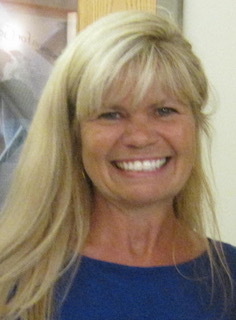
35. WHAT’S YOUR ULTIMATE DREAM?
My dream has always been to write a best seller that moves people, and becomes a classic. I also would love to be an awesome motivational speaker. I’d like to be a world changer on an individual level.
36. WRITING IS ONE THING. WHAT ABOUT MARKETING YOU, YOUR BOOKS AND YOUR BRAND? ANY THOUGHTS?
Yes, I’d like to speak in different venues to whoever could gain something from my story. I’d do interviews, radio shows, conferences, and blogs like this to gain more of an audience. I would attend authors’ events where I could read an excerpt of my story. I already visit schools to read Sammy and do book sales and signing, and find local book fairs. I’m open to travel to market my book(s). But beyond marketing my book(s), I teach Biblical truths, and lead studies on various topics.
37. ARE YOUR BOOKS SELF-PUBLISHED?
Sammy and Goliath is published by Orange Hat publishers, an Independent publisher. I’d love to submit my memoir to a traditional publisher.
38. DESCRIBE YOURSELF IN FIVE WORDS.
Teachable, thoughtful, spunky, artistic, helper
39. WHAT PISSES YOU OFF MOST?
Evil done to children, especially at the hands of parents. It is unthinkable, and a terrible tragedy beyond words.
40. WHAT IS THE TITLE OF THE LAST BOOK YOU READ? GOOD ONE?
A Gentleman in Moscow, by Amor Towles was absolutely fabulous. My husband read it and suggested I read it.
41. WHAT WOULD BE THE VERY LAST SENTENCE YOU’D WRITE?
…and in the course of time—after the dark adverse days caused by injuries from others, and the clouded nights due to failures of her own, and during the sunshiny, golden hours of the dawn—she lived an abundant life, finding sweet honey within the bitterness. And stepping into eternity, she heard the words, “Well done, my good and faithful servant.”
42. WHAT WOULD MAKE YOU HAPPIER THAN YOU ARE NOW? CARE TO SHARE?
To observe my children successful in their lives; not necessarily devoid of hardship, but able to persevere and gain strength, fortitude and show integrity of character in the midst of their trials. To know they are settled in their spirit with their Creator and finding peace and joy in life.
43. ANYTHING YOU’D LIKE TO ADD?
Thank you Clancy for inviting me on your blog spot and introducing me to your readers. I hope you will invite me back when my memoir is published! But in the meantime, for those who would like to purchase Sammy and Goliath for a child, grandchild, niece, nephew, student, library or to support a starving author, you can find it at amazon.comunder the title or on my website at www.sandykegel.com, (mention this article when you purchase from my website and I’ll give you free shipping and sign the book!) You can also find me on LinkedIn and Wisconsin Writers Association here: https://wiwrite.org/sandy-kegel/
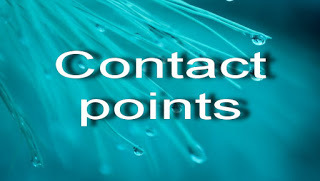
WEBSITE
AMAZON
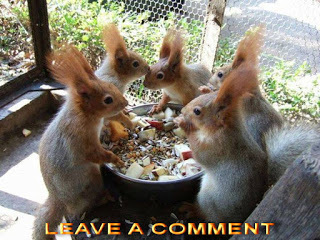
Clancy's comment: Thank you, Sandy, and good luck with that memoir. Good for you for writing a book about bullying. I have done the same, but sadly, bullying in all its shapes and forms continues.
I'm ...


Published on June 29, 2018 14:27
June 28, 2018
29 June 2018 - SOME FACTS ABOUT THE EDIBLE FROG
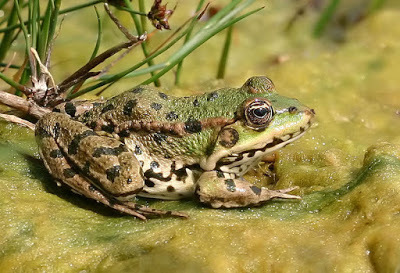
SOME FACTS ABOUTTHE EDIBLE FROG
G'day folks,
Ever eaten a frog? Well, read on to learn more ...
Edible FrogClassification and Evolution
The Edible Frogis a speciesof Frogfound across Europethat is also known as the Common Water Frogand the Green Frog. The Edible Frogis a fertile hybrid of two other European Frogs, the Pool Frog and the Marsh Frog, that bred when populations where isolated close to one another during the ice ages. The scientific name of the Edible Frogmeans both "mud" and "guardian" as they are known to never stray far from water, almost guarding the muddy banks. It was first described in 1758 and has adopted its name as the "edible" Frogdue to the fact that they are now seen as a culinary delicacy in France, particularly the legs.
Edible FrogAnatomyand Appearance
The Edible Frogis a medium sized Froggrowing to around 9cm in length. Females tend to be larger than males and have been known to get up to 12 cm long. Adult Edible Frogsare mainly green in colourwith light patches of brown on their backs, yellow eyes and a white underside, covered in a few dark spots. There are number of distinct differences between males and females including the fact that males become much lighter (and greener) during the mating season. Male Edible Frogsalso have vocal sacs on the outside of their cheeks and extra skin patches on their feet, both of which are primarily for mating.
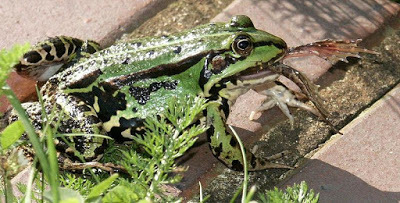
Edible FrogDistribution and Habitat
The Edible Frogis found across central Europeand as far north as Germanyand Estonia. Southern populations of the Edible Frogare found from Croatia, through northern Italyand into the south of France. There are also isolated populations in Swedenand Bulgariawhich are thought to have migrated from the countries nearby. Edible Frogsspend all of their time either in or very close to water and are most commonly found in calmer parts of rivers and streams, where there is a slow but constant flow of fresh water. They are said to prefer more open areas and can also be commonly spotted around lakes, ponds and marshes.
Edible FrogBehaviourand Lifestyle
Unlike many other speciesof Frog, the Edible Frogis a diurnalanimaland is therefore most active during the day. This is when Edible Frogsare most likely to move away from the water, so that they can find a better supply of food or move to a different part of the water if need be. The Edible Frogis a relatively solitary animalso there is less competition for food but males are often seen sitting together in groupsduring the breeding season when they are trying to out-compete each other for a mate. Edible Frogsspend a large portion of their time sitting motionless on the muddy banks where they are perfectly camouflaged by their skin colour. They are also known to move onto land to hibernate during the colder winter months.
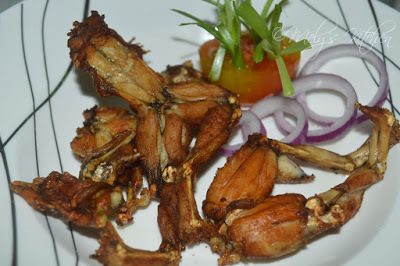
Edible FrogReproductionand Life Cycles
The breeding season for Edible Frogsbegins during March and generally lasts for a couple of months. Males sing by drawing air in and out of their vocal sacs to produce the highest-pitched sound possible, as the female is most attracted to the loudest Frog. After courting her in a lake, pond or swamp, the male lets the female lay up to 10,000 eggs in a sticky mass into the water, before he fertilises them. Tadpoles can be as small as 0.5cm long when they hatch and are a grey/brown colour, then growing up to 7cm in length before metamorphoses occurs, and they leave the water as 2cm long young Frogs. Edible Frogsreach sexual maturity at the age of two and can live until they are 15 years old.
Edible FrogDietand Prey
Adult Edible Frogsare carnivorous animals, surviving only by eating other animals. The tadpoles however, mainly eat vegetation although are known to supplement their dietwith aquatic micro-organisms on occasion. Small invertebratessuch as Insects, Spiders, Mothsand Flies make up the majority of their dietalong with larger aquatic animalslike Fish, Newtsand other Frogs, and even small Birds. Edible Frogshunt for their food during the day and can be seen catching food in ponds, and even on land. There are even reports of Edible Frogsventuring up to 500 meters away from water in their quest for nutrition.
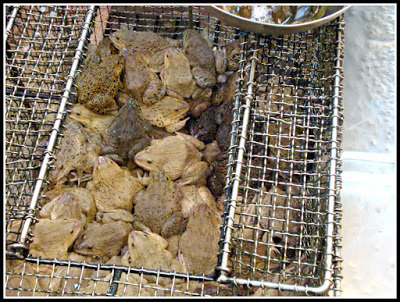
Edible FrogPredatorsand Threats
Edible Frogsremain very still when they are guarding the muddy banks, and this along with their camouflage, makes them very difficult for predatorsto spot. Their eyes are positioned near the top of their heads meaning they can also see danger coming whilst their body is mainly hidden. Snakes, Owls and water-dwelling Birdsare the main predatorsof the Edible Frog, along with Humanswho commonly eat them. Edible Frogswill jump into the water and hide if they sense approaching danger, and will make a loud screeching sound if caught. Edible Frogpopulations are also under threat from habitatdestruction mainly caused by deforestation and water pollution.
Edible FrogInteresting Facts and Features
The Edible Frogis one of the few animalsin the world that is a fertile mix of two different species, as although similar but genetically different speciesare known to mate, it is very rare that their offspring will be able to breed. The kl. of the Edible Frog's scientific name indicates that the speciesis made up of chromosomes that have been stolen from other species. The esculentuspart of the Edible Frog's scientific name is Latin for edible as this speciesis one of the most commonly eaten Frogspeciesin the world.
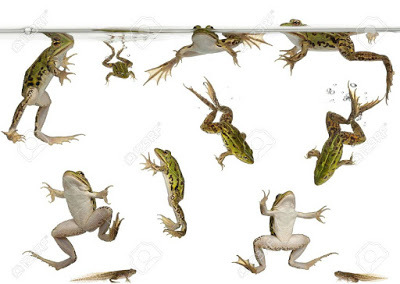
Edible FrogRelationship with Humans
As its name suggests, the Edible Frogis used as a food source by people across the continent, although they are most commonly eaten in Francewhere Frog's legs are often served as a national dish. The reason for Humansfavouring this Frogover others is not really known but it may have something to do with their abundance. However, despite still being one of the most common Frogsin Europe, the Edible Frogis under threat across much of its natural range as more land is tampered with. Due to their permeable skin, they are also particularly susceptible to water pollution and will migrate from areas where the water quality has declined.
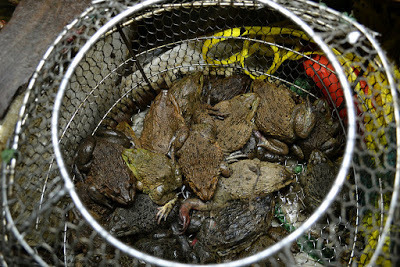
Edible FrogConservation Status and Life Today
Today, the Edible Frogis listed as a speciesthat is of Least Concern from extinction in the near future, but populations in certain areas are declining. They are particularly adaptable animalsand have been able to inhabit man-made bodies of water. Providing however, that the water quality is good, there is an ample supply of food and little competition for it from other species.
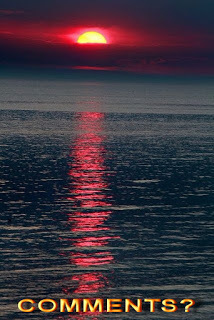
Clancy's comment: There ya go. I hope you found this interesting. Bon appetit.
I'm ...
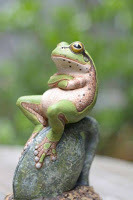

Published on June 28, 2018 15:24
June 27, 2018
28 June 2018 - MARGOT ROBBIE - AUSTRALIAN ACTRESS
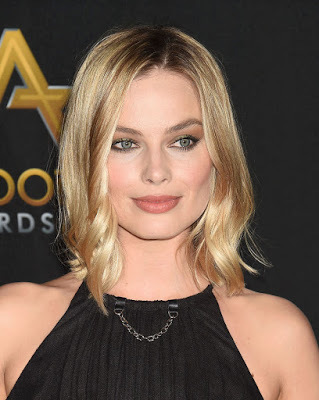
MARGOT ROBBIE - AUSTRALIAN ACTRESS -
G'day folks,
Margot Robbie is an Australian actress best known for her roles in 'The Wolf of Wall Street,' 'Suicide Squad' and 'I, Tonya.' Last night was the first time I’ve ever seen her interviewed on Australian television, and I must say I was most impressed by her articulation. Wow, she is not only eye candy, but also sharp and smart, and certainly not cocky. Margot Elise Robbie is also a film producer. In 2017, Time magazine named her as one of the 100 most influential people in the world, and Forbes featured her in their 30 Under 30 list.
Who Is Margot Robbie?
Following in the footsteps of her Australian countrywomen Nicole Kidman and Cate Blanchett, Margot Robbie took the film world by storm, first in Martin Scorsese’s The Wolf of Wall Street (2013), along with memorable roles in The Big Short (2015) and Suicide Squad(2016). In 2017 she starred as the controversial figure skater Tonya Harding in the biopic I, Tonya.
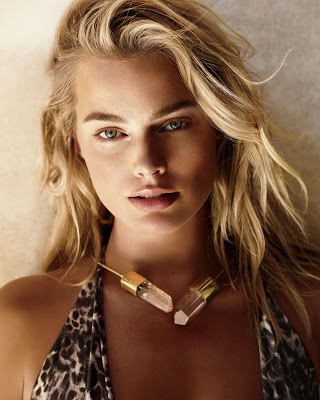
Hollywood Breakthrough: 'Wolf of Wall Street' Few remember her debut film, the Australian-made I.C.U., a serial killer thriller shot when she was 17 and released in 2009. Richard Curtis’ time-travel rom-com About Time(2013), with Domhnall Gleeson and Rachel McAdams, made more of a splash. But it was her role as Naomi, Leonardo DiCaprio’s Brooklyn bombshell wife and “the Duchess of Bay Ridge,” in Martin Scorsese’s fact-based epic of financial flim-flammery The Wolf of Wall Street (2013) that turned heads.
She also got attention for her small but standout role playing herself in The Big Short in 2015. The comedic scene involved her explaining mortgage-backed securities and subprime loans all the while floating in a tub of bubbles with champagne in hand.
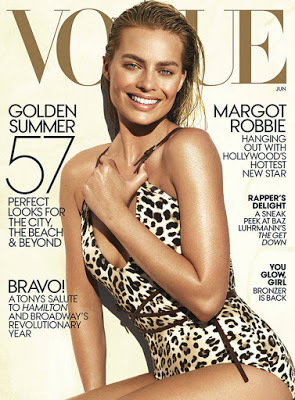
More Margot Robbie Movies: From 'Focus' to 'Suicide Squad'
Robbie co-starred with Will Smith in Focus (2015), as con artists who steal each other’s hearts. That same year she also starred in the sci-fi drama Z for Zachariahbefore re-teaming with Smith in the comics-based smash Suicide Squad (2016), with Robbie punkily attired as fan fave Harley Quinn, the psycho psychiatrist who is muse to Jared Leto’s Joker. She told The Washington Post that diving into a vat of “gluggy paint stuff” to bleach Harley’s skin in one scene was “the most unpleasant thing I’ve ever done in my entire life,” and her spiky accoutrement wasn’t exactly comfortable either. She plans to reprise her popular characterization in a spinoff, Gotham City Sirens, which she’ll also produce.
In 2016 Robbie also starred as Jane in The Legend of Tarzan and the following year, the wife of Winnie the Pooh author A.A. Milne in the historical drama Goodbye Christopher Robin.
Playing Tonya Harding in 'I, Tonya' A three-year-old toddler when the 1994 Winter Olympics were held, Robbie had no idea who Harding was, or what the infamous “whacking incident” involving Nancy Kerrigan was all about. As co-producer of the black comedy I, Tonya (2017), Robbie dove headlong into the part, recreating her every gesture as closely as possible. She did meet Harding, though limited their time together to a couple of hours — “otherwise I might have too much empathy for her,” she said after its premiere screening at the Toronto International Film Festival.
While Harding’s famous triple axel was recreated digitally, Robbie performed some of the skating routines on her own accord, and impressed enough with her overall performance to earn Golden Globe and Academy Award nominations for Best Actress.
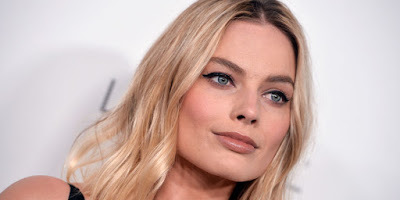
Growing Up in Australia's Gold Coast Robbie was born in Dalby, Queensland, Australia on July 2, 1990 and grew up in Gold Coast, a city 500 miles north of Sydney. Her mother, a physiotherapist, raised her and her three siblings after her parents divorced. Her father is a farmer. She told Vanity Fair that she thought she might be a magician, but an interest in drama in high school led her to Melbourne and a kids’ show, The Elephant Princess, co-starring the up-and-coming Liam Hemsworth.
Early Career: Australian Soap Opera 'Neighbours' Robbie has been professionally acting since her teens. Before she left for Hollywood, Australian audiences knew her from the TV soap opera Neighbours, which began airing five years before her birth. Fearing she failed her audition, she decided to vacation in Canada, but had to return quickly when she found out she had won the part of the vivacious Donna Freedman in 2008. Donna’s kiss with a female friend stirred controversy, though she remained a viewer favorite and was nominated for several awards. She left Neighbours in 2010 (in a “boring old happy ending”) but her first American TV show, Pan Am(2011), crash-landed after one season.
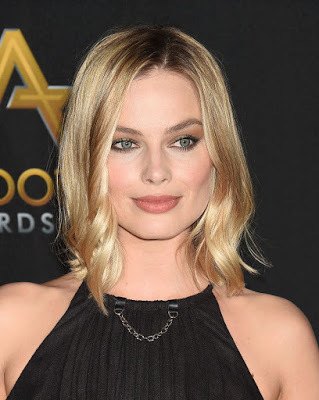
Personal Life
Robbie met assistant director Tom Ackerley on the World War II-set drama Suite Francaise(2014). The two began dating and eventually got married in December 2016 and moved to Los Angeles.
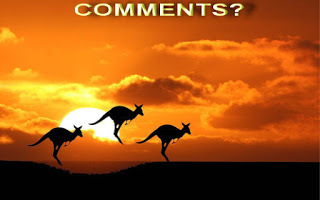
Clancy's comment: Go, Margot!
I'm ...
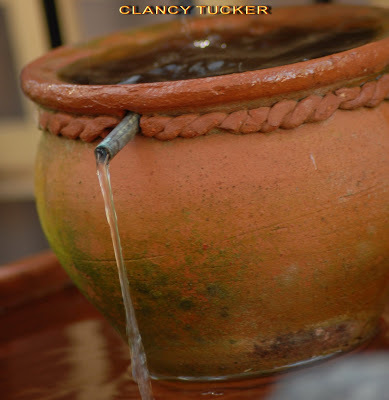
Published on June 27, 2018 14:36
June 26, 2018
27 June 2018 - QUOTES FROM FAMOUS WRITERS
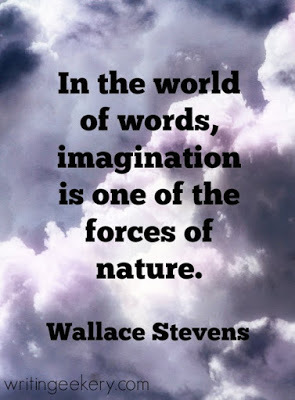
QUOTES FROM FAMOUS WRITERS
G'day folks,
Welcome to some more wise words from famous writers.
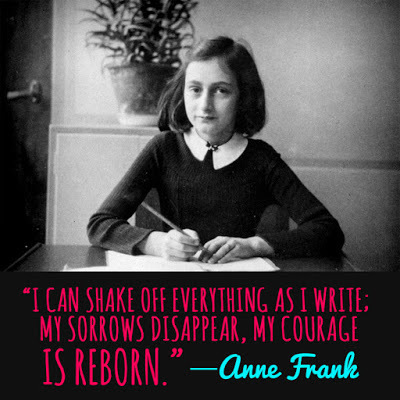
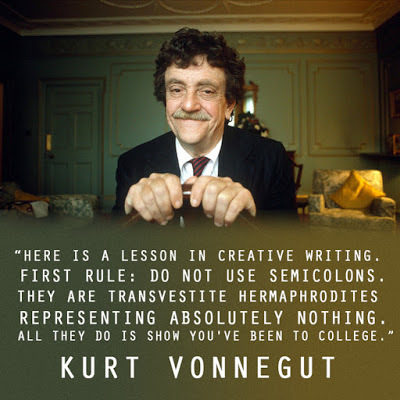
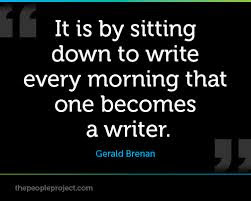
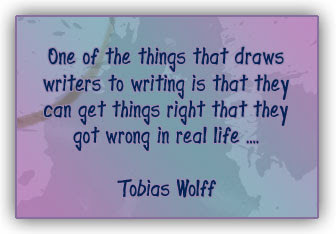
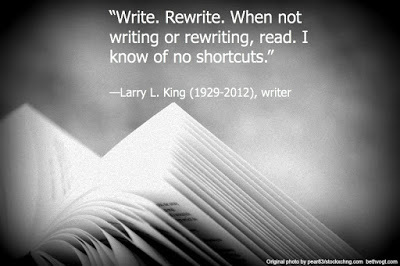
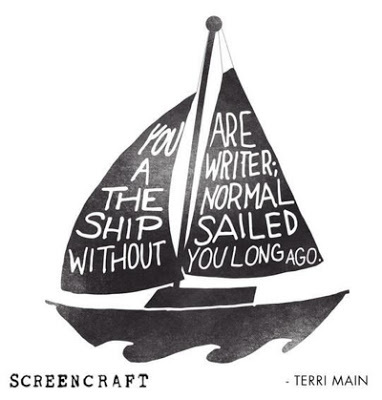
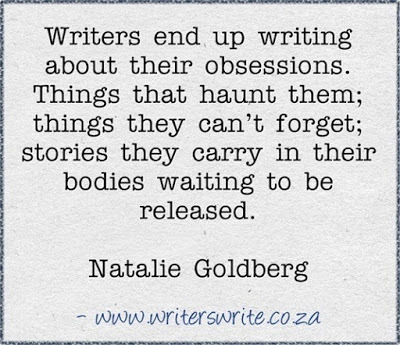
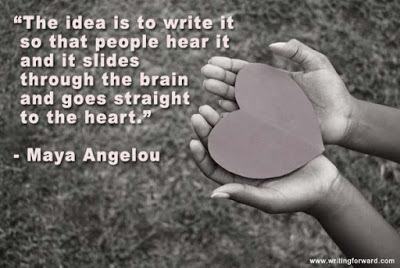
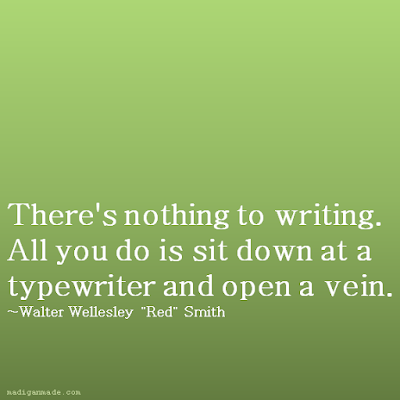
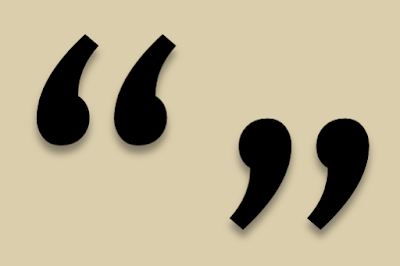

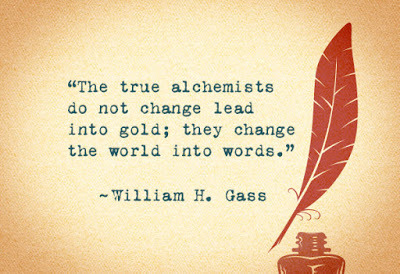
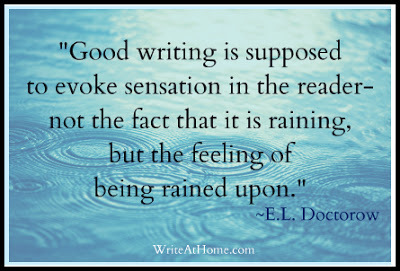
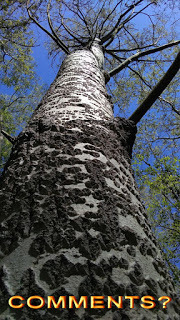
Clancy's comment: Mm ... One can only hope that some of these have inspired you writers.
I'm ...


Published on June 26, 2018 14:18
June 25, 2018
26 June 2018 - FACTS ABOUT THE AMAZING JELLYFISH
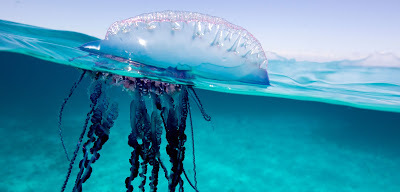
FACTS ABOUT THE AMAZING JELLYFISH
G'day folks,
No doubt all of you have come across these creatures at some stage, but what are they? Jellyfish or jellies are soft bodied, free-swimming aquatic animals with a gelatinous umbrella-shaped bell and trailing tentacles. The bell can pulsate to acquire propulsion and locomotion.
Jellyfish (also known as jellies and sea jellies) are boneless animalsthat float freely through the world's oceans. Although jellyfish exist in our oceansworldwide they are particularly prominent in coastal areas. Jellyfish can be found in all shapes and sizesfrom just a few inches in diameter to well over a metre.
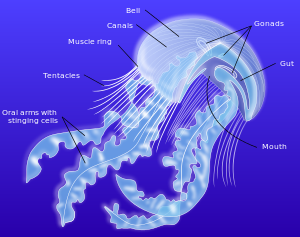
There are thought to be around 2,000 different speciesof jellyfish, the most common being the big, colourful ones found in warmer coastal areas. There are four different typesof jellyfish that are categorised by their shape and the way in which they behave.
Despite the name, jellyfish are not actually fishbut are instead classed in a groupof their own as they are unlike any other animalon Earth. The body of the jellyfish is made up of a non-living jellylike substance called mesoglea. This jelly is surrounded by a layer of skin that is just one cell thick. The body of the jellyfish is mainly made up of water, around 90% in fact.

Jellyfish also have tentacles around their mouths that vary in length depending on the speciesof jellyfish. The jellyfish use their tentacles to both catch and sting their prey. The tentacles of the jellyfish are covered in a skin that contains special cells, some that sting, some that grip and some that stick. The jellyfish is able to produce these cells at an alarming rate so they are effectively disposable to the jellyfish.
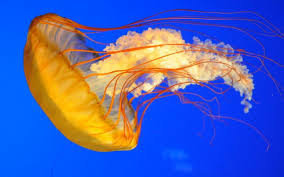
Some jellyfish stings contain poison which the jellyfish uses to stun and kill its prey. The box jellyfish, found in the oceansaround Australia, has a sting powerful enough to be fatal to humans. The long tentacles of the jellyfish are what produces the sting.
The jellyfish is a carnivorous animaland despite its appearance, the jellyfish is a remarkably efficient predator. Jellyfish use their tentacles to stun their preybefore grabbing onto it and bringing it into their mouth. Jellyfish preyon all kinds of aquatic animalssuch as small fish, eggs and invertebratesalong with anything else that gets stuck in their tentacles.
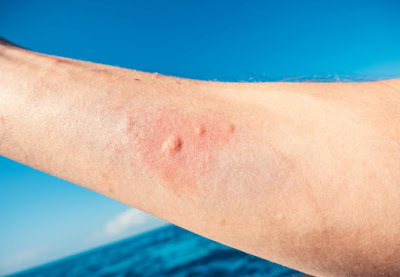
Due to the fact that many speciesof jellyfish are transparent, they are often hard for predatorsto spot. However, jellyfish are drifters and move very slowly through the water sometimes using their tentacles to propel them along. Jellyfish are eaten by humans, sharks, squidand occasionally birds.

Jellyfish release their eggs and sperm into the water which eventually meet and the egg is fertilised. The jellyfish egg quickly becomes and embryoand begins to develop in it's water world.
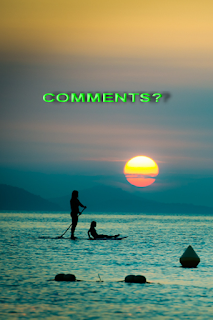
Clancy's comment: Some are beautiful, but many like we have in Australia can be deadly.
I'm ...


Published on June 25, 2018 14:41
June 24, 2018
25 June 2018 - WEIRD AND WONDERFUL
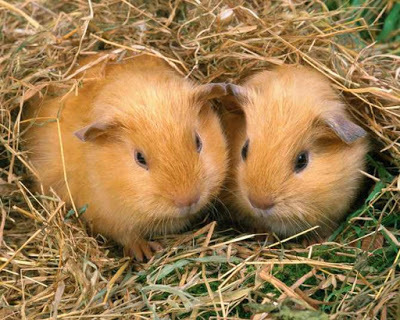
WEIRD AND WONDERFUL
G'day folks,
Brace yourself for some more weird and cute stuff.
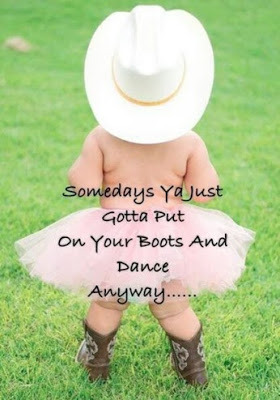
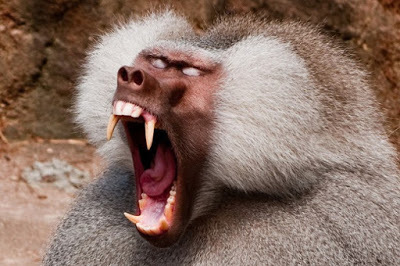
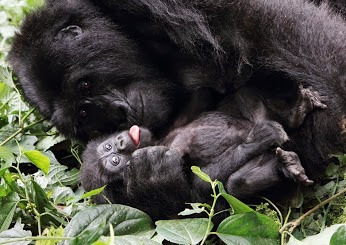
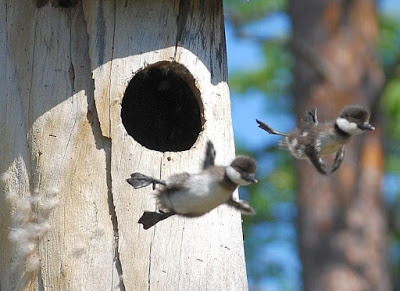
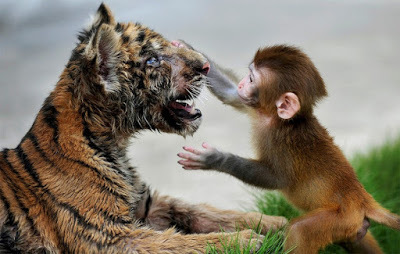
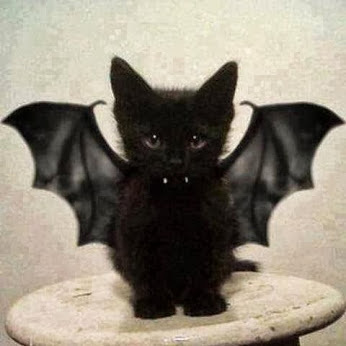
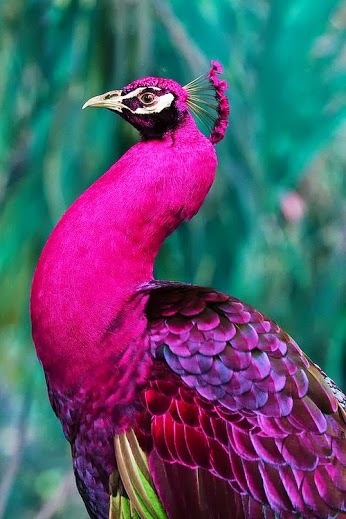
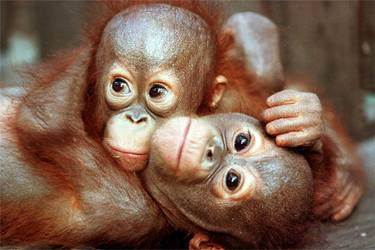
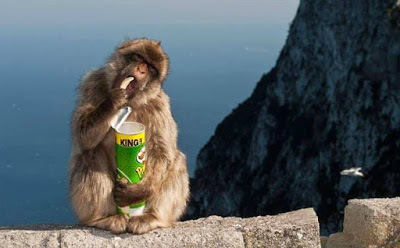
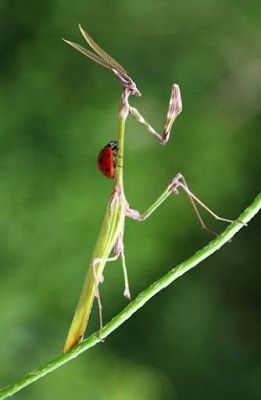
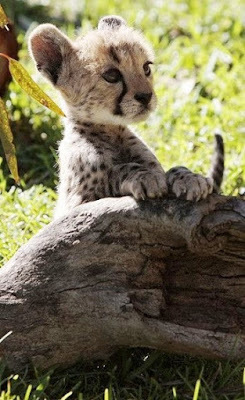
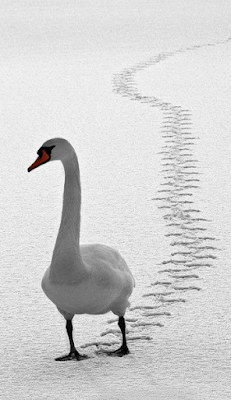
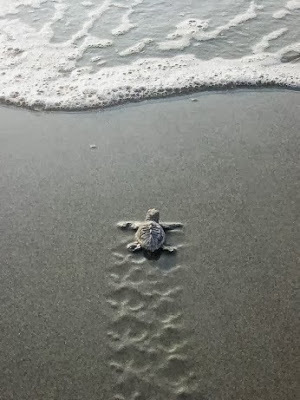

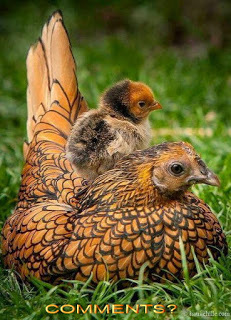
Clancy's comment: I hope that little turtle made it to the sea. Many don't.
I'm ...
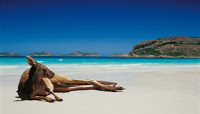

Published on June 24, 2018 14:34
June 23, 2018
24 June 2018 - AGENT ORANGE
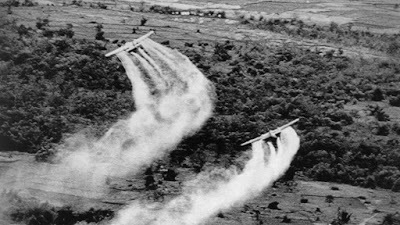
AGENT ORANGE
G'day folks,
Agent Orange is a herbicide and defoliant chemical. It is widely known for its use by the U.S. military as part of its herbicidal warfare program, Operation Ranch Hand, during the Vietnam War from 1961 to 1971.
Agent Orange was a powerful herbicide used by U.S. military forces during the Vietnam War to eliminate forest cover and crops for North Vietnamese and Viet Cong troops. The U.S. program, codenamed Operation Ranch Hand, sprayed more than 20 million gallons of various herbicides over Vietnam, Cambodia and Laos from 1961 to 1971. Agent Orange, which contained the deadly chemical dioxin, was the most commonly used herbicide. It was later proven to cause serious health issues—including cancer, birth defects, rashes and severe psychological and neurological problems—among the Vietnamese people as well as among returning U.S. servicemen and their families.
Operation Ranch Hand
During the Vietnam War, the U.S military engaged in an aggressive program of chemical warfare codenamed Operation Ranch Hand.
From 1961 to 1971, the U.S. military sprayed a range of herbicides across more than 4.5 million acres of Vietnam to destroy the forest cover and food crops used by enemy North Vietnamese and Viet Cong troops.
U.S. aircraft were deployed to douse roads, rivers, canals, rice paddies and farmland with powerful mixtures of herbicides. During this process, crops and water sources used by the non-combatant native population of South Vietnam were also hit.
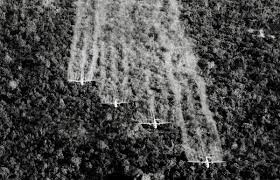
In all, American forces used more than 20 million gallons of herbicides in Vietnam, Laos and Cambodia during the years of Operation Ranch Hand. Herbicides were also sprayed from trucks and hand-sprayers around U.S. military bases.
Some military personnel during the Vietnam War era joked that “Only you can prevent a forest,” a twist on the U.S. Forest Service’s popular fire-fighting campaign featuring Smokey the Bear.
What Is Agent Orange?
The various herbicides used during Operation Ranch Hand were referred to by the colored marks on the 55-gallon drums in which the chemicals were shipped and stored.
In addition to Agent Orange, the U.S. military used herbicides named Agent Pink, Agent Green, Agent Purple, Agent White and Agent Blue. Each of these—manufactured by Monsanto, Dow Chemical and other companies—had different chemical chemical additives in varying strengths.
Agent Orange was the most widely used herbicide in Vietnam, and the most potent. It was available in slightly different mixtures, sometimes referred to as Agent Orange I, Agent Orange II, Agent Orange III and “Super Orange.”
More than 13 million gallons of Agent Orange was used in Vietnam, or almost two-thirds of the total amount of herbicides used during the entire Vietnam War.
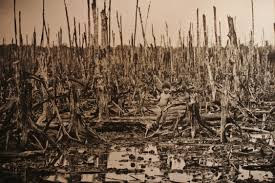
Dioxin in Agent Orange
In addition to Agent Orange’s active ingredients, which caused plants to “defoliate” or lose their leaves, Agent Orange contained significant amounts of 2,3,7,8-tetrachlorodibenzo-p-dioxin, often called TCDD, a type of dioxin.
Dioxin was not intentionally added to Agent Orange; rather, dioxin is a by-product that’s produced during the manufacturing of herbicides. It was found in varying concentrations in all the different herbicides used in Vietnam.
Dioxins are also created from trash incineration; burning gas, oil and coal; cigarette smoking and in different manufacturing processes such as bleaching. The TCDD found in Agent Orange is the most dangerous of all dioxins.
Effects of Agent Orange
Because Agent Orange (and other Vietnam-era herbicides) contained dioxin in the form of TCDD, it had immediate and long-term effects.
Dioxin is a highly persistent chemical compound that lasts for many years in the environment, particularly in soil, lake and river sediments and in the food chain. Dioxin accumulates in fatty tissue in the bodies of fish, birds and other animals. Most human exposure is through foods such as meats, poultry, dairy products, eggs, shellfish and fish.
Studies done on laboratory animals have proven that dioxin is highly toxic even in minute doses. It is universally known to be a carcinogen (a cancer-causing agent).

Short-term exposure to dioxin can cause darkening of the skin, liver problems and a severe acne-like skin disease called chloracne. Additionally, dioxin is linked to type 2 diabetes, immune system dysfunction, nerve disorders, muscular dysfunction, hormone disruption and heart disease.
Developing fetuses are particularly sensitive to dioxin, which is also linked to miscarriages, spina bifida and other problems with fetal brain and nervous system development.
Veteran Health Issues and Legal Battle
Questions regarding Agent Orange arose in the United States after an increasing number of returning Vietnam veterans and their families began to report a range of afflictions, including rashes and other skin irritations, miscarriages, psychological symptoms, type 2 diabetes, birth defects in children and cancers such as Hodgkin’s disease, prostate cancer and leukemia.
In 1988, Dr. James Clary, an Air Force researcher associated with Operation Ranch Hand, wrote to Senator Tom Daschle, “When we initiated the herbicide program in the 1960s, we were aware of the potential for damage due to dioxin contamination in the herbicide. However, because the material was to be used on the enemy, none of us were overly concerned. We never considered a scenario in which our own personnel would become contaminated with the herbicide.”
In 1979, a class action lawsuit was filed on behalf of 2.4 million veterans who were exposed to Agent Orange during their service in Vietnam. Five years later, in an out-of-court-settlement, seven large chemical companies that manufactured the herbicide agreed to pay $180 million in compensation to the veterans or their next of kin.
Various challenges to the settlement followed, including lawsuits filed by some 300 veterans, before the U.S. Supreme Court confirmed the settlement in 1988. By that time, the settlement had risen to some $240 million including interest.
In 1991, President George H.W. Bush signed into law the Agent Orange Act, which mandated that some diseases associated with Agent Orange and other herbicides (including non-Hodgkin’s lymphoma, soft tissue sarcomas and chloracne) be treated as the result of wartime service. This helped codify the VA’s response to veterans with conditions related to their exposure to Agent Orange.

Legacy of Agent Orange in Vietnam
In addition to the massive environmental devastation of the U.S. defoliation program in Vietnam, that nation has reported that some 400,000 people were killed or maimed as a result of exposure to herbicides like Agent Orange.
In addition, Vietnam claims half a million children have been born with serious birth defects, while as many 2 million people are suffering from cancer or other illness caused by Agent Orange.
In 2004, a group of Vietnamese citizens filed a class-action lawsuit against more than 30 chemical companies, including the same ones that settled with U.S. veterans in 1984. The suit, which sought billions of dollars worth of damages, claimed that Agent Orange and its poisonous effects left a legacy of health problems and that its use constituted a violation of international law.
In March 2005, a federal judge in Brooklyn, New York, dismissed the suit; another U.S. court rejected a final appeal in 2008, causing outrage among Vietnamese victims of Operation Ranch Hand and U.S. veterans alike.
Fred A. Wilcox, author of Scorched Earth: Legacies of Chemical Warfare in Vietnam, told the Vietnamese news source VN Express International, “The U.S. government refuses to compensate Vietnamese victims of chemical warfare because to do so would mean admitting that the U.S. committed war crimes in Vietnam. This would open the door to lawsuits that would cost the government billions of dollars.”
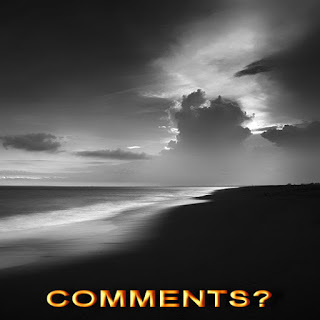
Clancy's comment: And, as I have asked before, notwithstanding the massive financial costs of using this chemical and its physical effects on humans and wildlife, who won the bloody war?
I'm ...
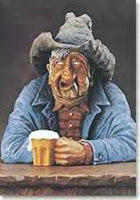
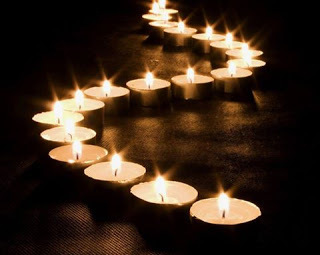
R. I. P
Published on June 23, 2018 13:02
June 22, 2018
23 June 2018 - TRAILER PARKS - 'TRAILER TRASH' OR A WAY OF LIFE?
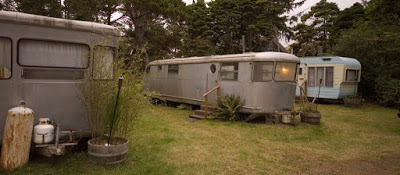
TRAILER PARKS - 'TRAILER TRASH' OR A WAY OF LIFE? -
G'day folks,
In 1954, Lucille Ball and Desi Arnaz starred in The Long, Long Trailer , a movie about two newlyweds who decide to spend their honeymoon in a trailer. The film, basically a goofy prop comedy in the style of I Love Lucy, was “frankly witless,” according to the New York Times that year, and the trailer a “contrivance strictly for ‘yaks.’” The shower head seems to attack Arnaz, and the trailer’s tilt turns Lucy’s attempt to cook eggs into slapstick. By the mid-fifties, the trailer, a modern cousin of the covered wagon, had been a fixture on the roads for a couple of decades, but ideas about the kinds of people who had them were still evolving. Though the movie was ostensibly about a middle-class couple looking for a luxurious getaway, it drove home the idea that there was something hilariously ill-fated, indeed absurd, about choosing trailer life.
The trailer has always held a special place in the American imagination.
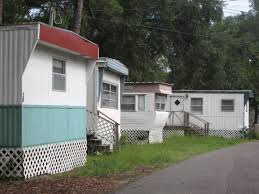
Once a symbol of freedom and mobility, it became — through waves of economic hardship and discrimination over the course of the 20th century — a testament to the limitations of the so-called land of opportunity. Stated another way, trailers became the province of the have-nots, and along the way, the pernicious myth of “trailer park trash” became core to a set of stereotypes about lower-class white people.
“In the forties and fifties, we were thought of as trailer trash,” says an interviewee in the documentary“Suburbs on Wheels: A History of American Trailer Parks.” “I don’t know if people didn’t want anything to do with us because we lived in these little buildings, but we just stuck together, we hung together, we stuck up for each other.”
The “little buildings” started as vessels designed to be pulled by cars, which were, in the years following World War I, suddenly abundant. Between 1922 and 1929, car production essentially doubled, from 2.27 million automobiles to 4.45 million. Although the Interstate Highway System wouldn’t be authorized for another generation, more cars meant more movement. In particular, it meant that families could travel as they hadn’t been able to before.
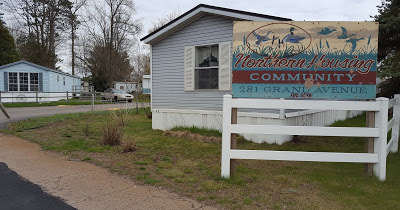
Trailer parks began as resting places for these newly mobile travelers. They were a safe place to stop, and many also accommodated tents. At the time, many trailers were homemade, built according to simple plans, though the manufacturing of trailers had been growing since the 1930s.
Of course, that was also the period of the Great Depression, when many were forced into a life of destitution and itinerancy. This was the era when the trailer park acquired its reputation as “trashy.” As more and more people used rolling domiciles as permanent homes, the once glamourous capsules went from representing freedom to representing its opposite: confinement and a lack of opportunity.
Trailer living became an even more entrenched way of life during World War II, when mobile home parks were used to accommodate factory workers, “sturdy families who’ve answered the call of production,” according to a government film advertising the Defense Housing Program.

Even as the trailer was repurposed for patriotic ends, those who lived in them were seen as low-class, even “squatters.” As Nancy Isenberg points out in her 2016 book White Trash: The 400-Year Untold History of Class in America, the trailer industry attempted to rehabilitate its image in the late 1940s by doubling down on advertising the units as “trailer coaches,” with ample space set among well-kept neighbors. The manufacturing industry even “pressed for improved trailer ‘parks’ — an image that conjured well-manicured, family-friendly garden sites and was meant to cast off the temporary-sounding, refugee-bearing trailer ‘camps’ of World War II,” Isenberg writes.
The tension that the trailer represented — a strange duality of freedom and confinement — was borne out, according to Isenberg, in the pulp fiction of the time, which established a few enduring trailer park tropes. Novels with titles like Trailer Tramp and The Trailer Park Girls peddled stories of sexual deviance and, in particular, “easy” women engaging in no-holds-barred sex in the liminal world embodied by the “edge of town.”
Through these representations, the “freedom” of the trailer park was recast as rootlessness, even lawlessness. As Isenberg writes, “At their worst, such places have been associated with liberty’s dark side: deviant, dystopian wastelands set on the fringe of the metropolis.” The trailer is a bundle of contradictions: As an object, Isenberg writes, “the trailer is something modern and antimodern, chic and gauche, liberating and suffocating. Unlike the dull but safe middle American suburb, trailer parks contain folks who appear on the way out not up: retired persons, migrant workers and the troubled poor. This remains true today.”
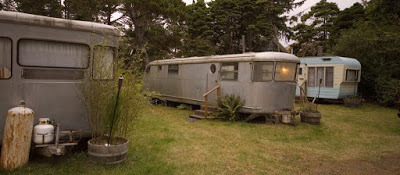
As the century wore on, the trailer had a hard time competing with another wave of marginally more permanent affordable housing: the tract house. In the 1950s, developers began building out American suburbs, and the prefabricated housing options offered by construction companies like Levitt & Sons became the centerpiece of the postwar American Dream. And as Isenberg is careful to note, the Federal Housing Authority did not even begin insuring mortgages for trailer homes until 1971, which meant that owners faced “hidden fees and penalties” that offset their supposedly cheap price tags. This also made trailer residents a target of resentment, since they weren’t paying property taxes.
Moreover, since desirable plots of land were used for new suburban home construction, trailer parks were often consigned to unappealing lots, which has led to them being the biggest victims of natural disasters.
All of these factors contributed to the American notion of the trailer park. But historical factors aren’t the only relevant ones to consider. As writer Emily Colucci argueson the blog Filthy Dreams, the “trash” in trailer trash, and at the center of a broader “trashy” aesthetic and sensibility, is in fact a form of excess. We see trash as overflow or excess, so we are more likely to see the trailer park as lurid and its denizens as inessential to the functioning of the community.

Though Lucy and Desi were arguably just cruising American highways in search of honeymoon adventures in The Long, Long Trailer, they were also part of a tradition of rendering ridiculous a life lived, even temporarily, in a substandard, socially unacceptable way. As Isenberg deftly establishes throughout White Trash, representation matters. With almost no cultural images of dignified life on the inside of a trailer, or in the often close-knit neighborhoods that trailer parks become, Americans cling instead to the simple, outmoded ideas about trailers and their inhabitants that they’ve held for nearly a century.
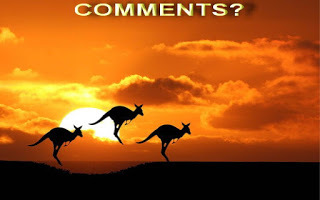
Clancy's comment: My father used to say, 'Home is where you hang your swag'. So, each to their own, eh?
I'm ...


Published on June 22, 2018 15:16



